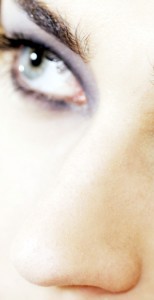 Cosmetic surgery is usually done to reconstruct deformities caused by accidents. It has become more a necessary procedure to restore the aesthetic tone of the human body. One approach used by cosmetic surgeons in the restoration of the appropriate tone is soft tissue implants. Soft tissue implants are used to reconstruct void areas in the tissues caused by surgical procedures or traumatic experiences (e.g. physical injury), to repair folding or wrinkled tissues (also called rhytides) that result from aging, to enhance tissues for cosmetic and aesthetic purposes, and to remove scars brought about by acne growth.
Cosmetic surgery is usually done to reconstruct deformities caused by accidents. It has become more a necessary procedure to restore the aesthetic tone of the human body. One approach used by cosmetic surgeons in the restoration of the appropriate tone is soft tissue implants. Soft tissue implants are used to reconstruct void areas in the tissues caused by surgical procedures or traumatic experiences (e.g. physical injury), to repair folding or wrinkled tissues (also called rhytides) that result from aging, to enhance tissues for cosmetic and aesthetic purposes, and to remove scars brought about by acne growth.
Restoration can either be done through the use of injectable fillers or implantable substance. Several implant materials are being used for soft tissue and facial implants. In fact, clinical testing on the best material to use for implantation is still undergoing. The appropriate implant substance should have the following characteristics: it must be accepted by the body and integrate itself with the surrounding tissues, no side effects or physical complications will occur, it should be more or less permanent, and lastly, the material can be applied easily and quickly.
Facial implants can augment facial features and lines on the following areas: frown lines (also called glabellar lines), smoker’s lines (perioral lines), marionette lines (oral commissures), worry lines (forehead lines), crow’s feet (periorbital lines), deep smile lines (nasolabial furrows), smile lines (nasolabial lines), cheek depressions, lip enhancement, witch’s chin (chin augmentation), acne scars and facial scars.
The usual complications that may arise out of soft tissue implants are allergic reaction toward the substance implanted, bleeding and contusion, non-allergic but irritating reaction, loss of sensation, infections, and bulging or shifting of the implant. So far, all soft tissue implants that have been used have some form of side effect upon the recipient.
Besides autogenous tissues which are harvested from the patient, alloplasts materials come as the next suitable substance for implantation. An alloplast is manufactured using biocompatible and non-organic materials designed to produce less or no reactive side effects. Gore-tex, which is first used in 1971, is an alloplast identified to possess the characteristics of what the best implant should be.
From the time Gore-tex expanded polytetraflouroethylene (E-PTFE) has been used (with more than half-a-million clinical procedures) no implant rejection report has been recorded. There is less occurrence of infection, and when it does occur, it can be treated with antibiotics, thus, eliminating the need for another surgery to remove the implant. The use of Gore-tex expanded polytetraflouroethylene for nasal dorsum implantation in 66 patients during the period of more than six years has shown significant success without complications observed.
Gore-tex had its beginning in 1958 when Wilbert Gore saw the commercial opportunity for polytetrafluoroethylene (PTFE). It is commonly known as the DuPont Teflon. His son Robert found out that PTFE cab stretch into a porous but strong substance. The Gore-tex expanded PTFE is smooth and inert, and thus biocompatible for facial and soft tissue implants. Gore S.A.M. (Gore subcutaneous augmentation material), the technical name or Gore-tex, has several manufacturers including Gore Industries Worldwide and Gore Advanced Technologies Worldwide.
